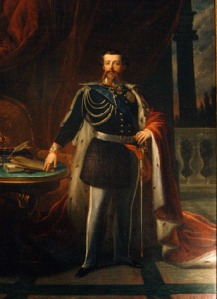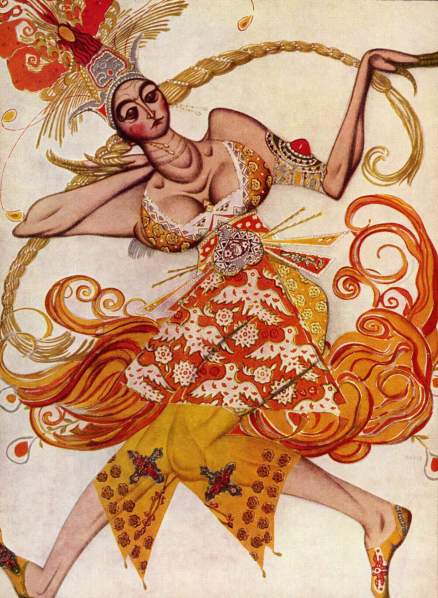At Foppa’s Club, Nick surveys the scene: “The Walls were white and bare, the vermouth bottles above the little bar shining out in bright stripes of colour that seemed to form a kind of spectrum in red, white and green. These patriotic colors linked the aperitifs and liqueurs with the portrait of Victor Emmanuel II which hung over the mantelpiece. Surrounded by a wreath of laurel, the King of Sardinia and United Italy wore a wasp-waisted military frock-coat swagged with coils of yellow aiguillette. The bold treatment of his costume by the artist almost suggested a Bakst design for one of the early Russian ballets.” [AW 152/145]

Vittorio Emanuele II di Savoia
artist unknown
Museo nazionale del Risorgimento, Torino
photo public domain from Wikimedia Commns
Victor Emmanuel II (1820-1878) succeeded his father as King of Sardinia-Piemonte during the tumultuous mid-19th century period of warfare among the many Italian states and their several non-Italian proxies. Victor Emmanuel was effective in the unification movement known as the Risorgimento, and became the first king of the united Italy in 1870. Universally venerated in modern Italy as the father of his country, Victor Emmanuel’s painted and photographed likeness adorns wall wherever Italians gather . This painted portrait, of unknown authorship, omits the laurel wreath but vividly depicts the uniform he is almost always shown wearing.
Léon Bakst (1866-1924), born Lev Samoilovitch Rosenberg, was a Russian Jewish painter whose latter-day fame derives primarily from his career as a set and costume designer for the Ballets Russes under Serge Diaghilev. Bakst, in collaboration with Diaghilev and the choreographer Fokine, is credited with helping to bring ballet into the modern era, transforming it from a story-telling medium with mime and dance interludes into an integrated theatrical form. Music, movement, story, and visual design were unified into an expressive whole, in which Bakst’s designs served to add emotional intensity to the language of the body. Powell wrote of “the implications of irony, disillusionment, cruelty, that add force to Bakst’s Russian Ballet décor.” [TKBR 37] Bakst’s costumes were particularly admired for the lavishness of their color and ornamentation, and their exoticism. This 1910 costume design for Stravinsky’s Firebird has nothing of Victor Emmanuel’s military air to it, but one can see why the latter’s “wasp-waisted military frock-coat swagged with coils of yellow aiguillette” brings the Russian designer to Nick’s mind.

Pingback: Legat Caricatures | picturesinpowell